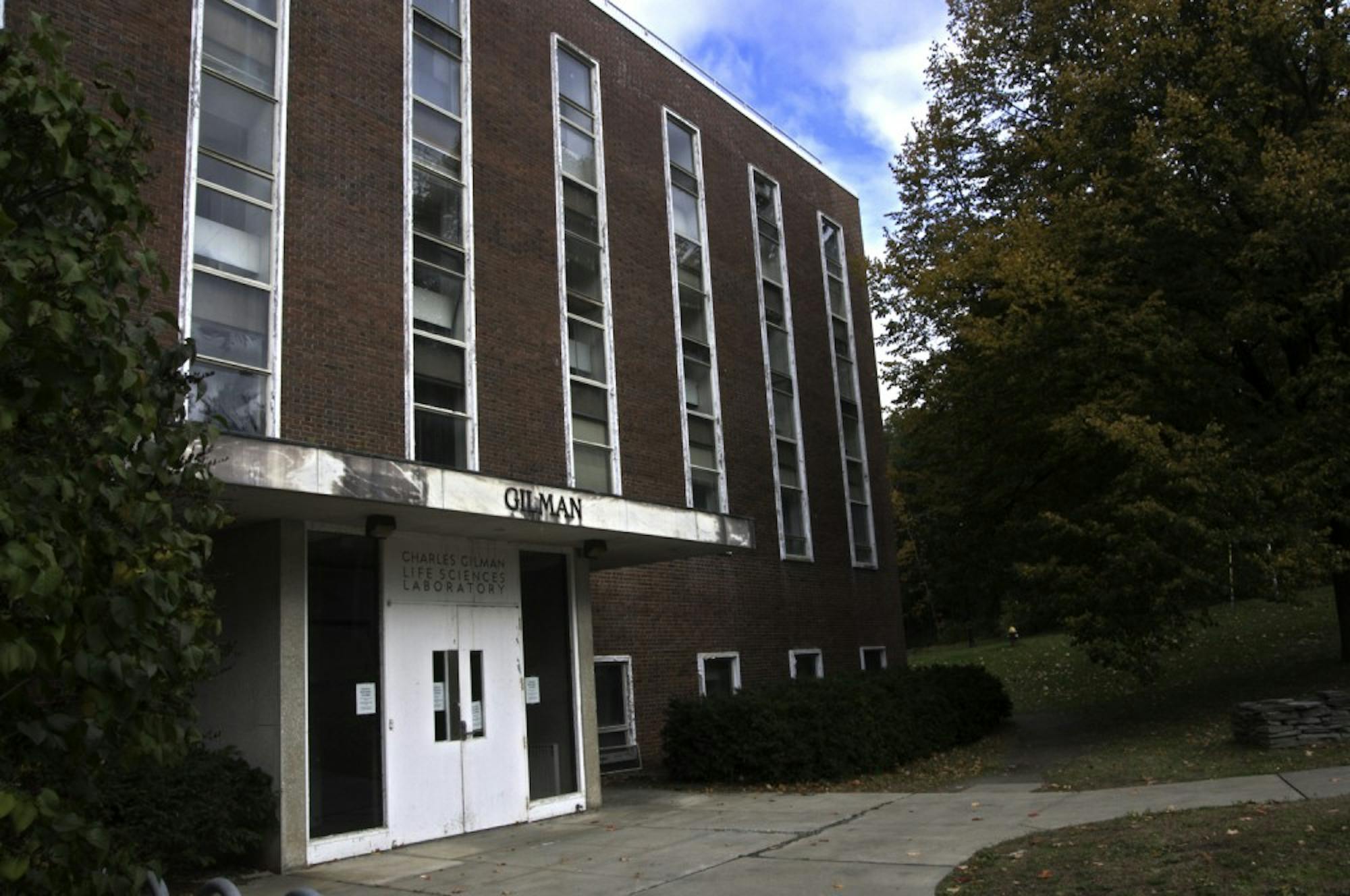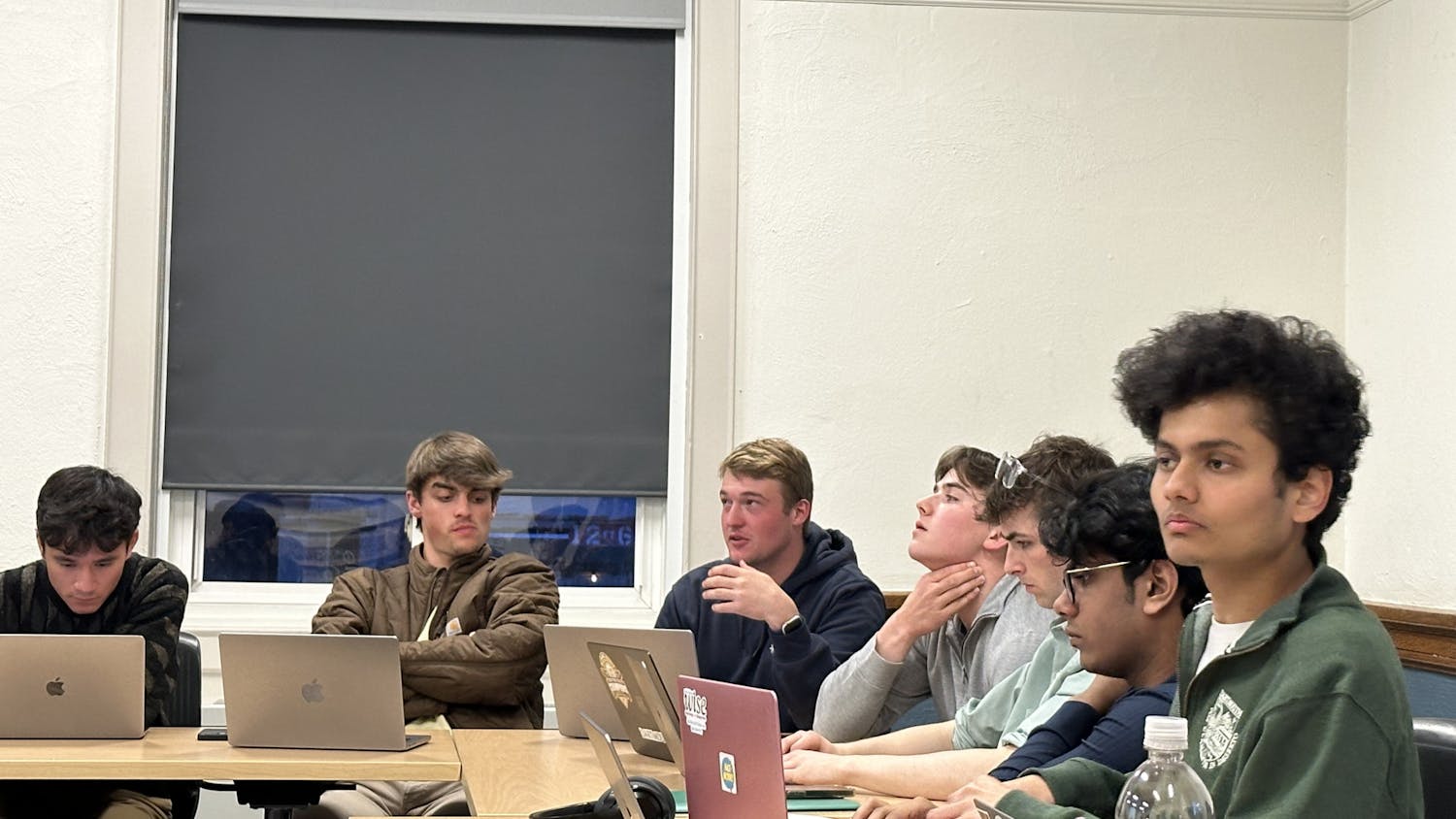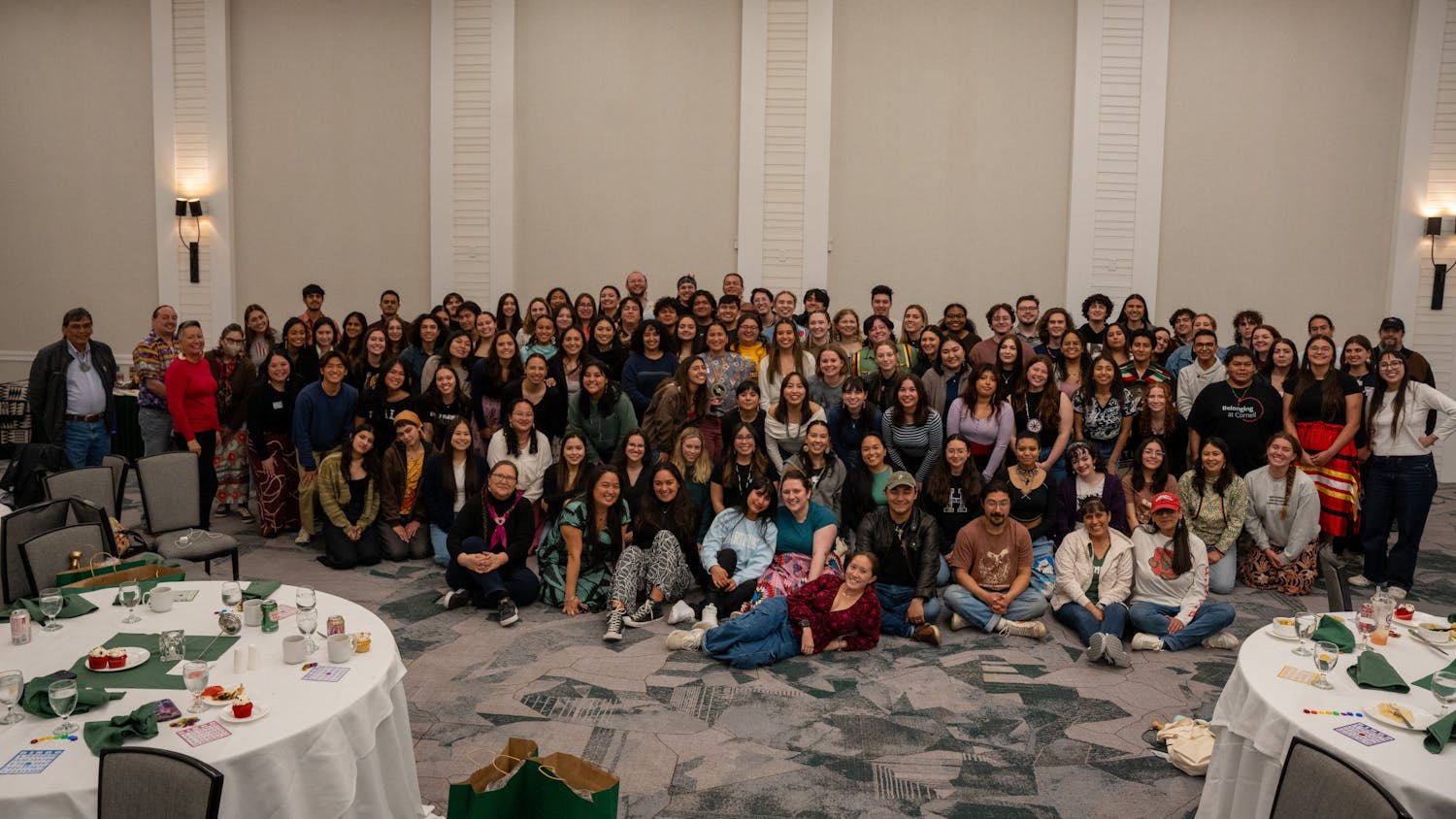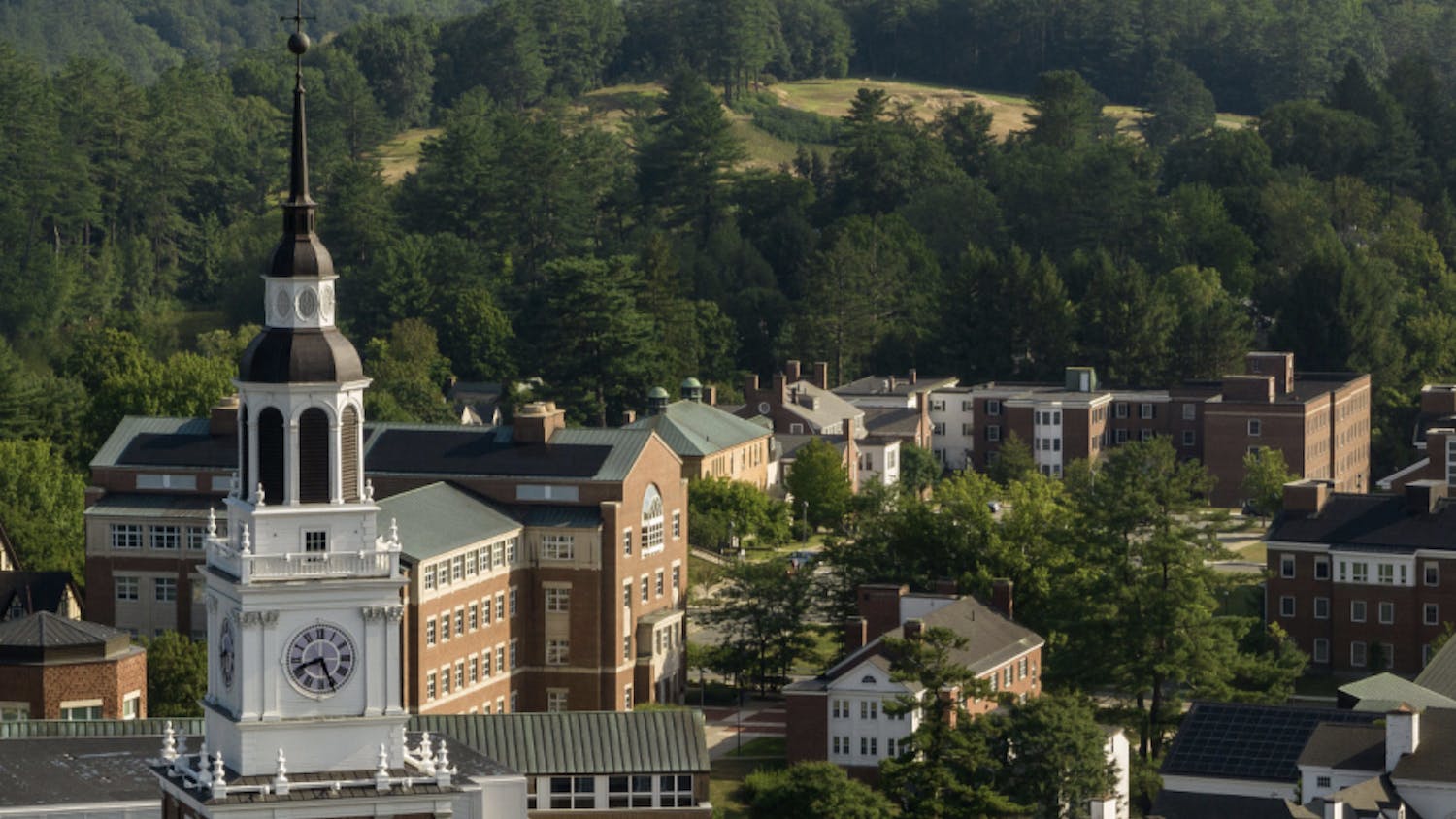From the football field to Panarchy, and from Hanover to Lebanon, more than $100 million worth of construction projects are underway this fall.
In June, Panarchy undergraduate society residents were forced to vacate the house due to health and fire code violations. Repairs will cost up to $400,000, paid for by a mix of donations, savings and loans, Panarchy Corporation president and Thayer Ph.D. candidate Dan Olson ’04 said.
Pending approval from Hanover fire department chief Martin McMillan, Panarchists will be able to move back into the house this winter and spring, he said.
On Sept. 25, Panarchists launched an Indiegogo campaign called “Project Save Panarchy” that has raised $12,860 of its $14,000 goal. Over the next five years, the organization seeks to raise $100,000 to pay for repairs.
Construction will consist of two phases. The first will bring minor repairs such as replacing broken electrical outlet covers and patching holes in the wall. Estes and Gallup constructing firm will separate the main staircase from the rest of the first floor, which should be completed by Dec. 31, Olson said.
The plans have progressed on schedule, and work has started on minor repairs that do not require building permits, Olson said.
Olson said architect John Vansant ’81 is planning the second phase, noting that it will involve building a second staircase so people can escape in case of a fire. This construction will most likely begin next summer.
“Originally we thought we were going to be able to stop after phase one, which would have been just barely in compliance with fire code, but we wanted to exceed the minimum requirements due to the unique (i.e. confusing) layout of the house,” Olson wrote in an email.
The first phase of construction will cost $100,000, Olson said, and the second phase will cost $300,000.
Half a mile away, demolition of Memorial Field’s West Stands will begin after the football team faces Brown University at home on Nov. 15, head coach Buddy Teevens said. The Board of Trustees approved the $10.5 million project last spring.
The work will be completed during winter term and spring interim, Teevens said.
He said the stands, which lack handrails and have uneven steps, will be safer and comply with safety codes following the renovation. To follow new regulations, he said, stadium seats will be widened. The construction will modernize restrooms and enhance the press box with upgraded technology for television and radio broadcasts.
“It won’t affect my football team in terms of on-the-field stuff, but it will present a much more attractive and current stadium then what we’ve had in the past,” he said. “I think every school in the league has updated theirs except Dartmouth, and I think it’s absolutely essential — otherwise it’s going to fall down and be condemned.”
In Lebanon, the five-story Williamson Translational Research Building is on schedule and on budget, Geisel Medical School spokesperson Derik Hertel wrote in an email. According to the building website, the building will be home to scientists and researchers working in areas like neuroscience, clinical and translational pathology and computational medical sciences.
The building will also serve as the headquarters of Synergy, Dartmouth’s clinical and translational science institute, program director Alan Green said.
The Center of Genomic Medicine will also move in to the building, said Norris Cotton Cancer Center interim deputy director Christopher Amos, who leads the project. Amos said the space aims to facilitate communication between physicians and clinical staff members, which will ultimately improve their work.
“The groups that are coming together are currently situated in several different regions of the campus and are excited to be coming together in a beautiful space,” he wrote in an email.
Construction started in spring 2013 and is scheduled to finish by this summer, Hertel said.
Minor changes have come since the project kicked off, though the building size and location have remained the same. He added that there is a contingency fund to address any unforeseen circumstances and to fund any additional improvements.
The project is projected to cost $111 million, including about $20 million from the Dartmouth-Hitchcock Medical Center and a $20 million gift from Peter and Susan Williamson. Initially, the building was expected to cost $116.5 million.
Construction on the Hood Museum will triple its classroom capacity. The Hood has a $50 million fundraising goal.
Thayer Engineering School may receive a third building as early as 2017, helping boost its capacity as enrollment increases over the next few years, vice president for campus planning and facilities Lisa Hogarty said in a previous interview.
The Board of Trustees approved a $150 million construction plan for the Williamson Translational Research Building and the North Campus Academic Center in June 2012.
The North Campus center, announced in 2011 and slated to be completed by 2015, has seen little progress. The building was expected to house health care delivery projects, which were then moved to the planned Williamson Translational Research Building, as well as three social science departments, graduate studies programs, the Geisel Medical School administration and the Dana Biomedical Library.
Gilman Hall, the now-closed former home of the biology department and proposed location for the academic center, will remain vacant for the foreseeable future, Hogarty said. Though the College investigated potential uses for the building over the summer, it did not decide on an immediate course of action. While housing was considered as one option, this would have been too expensive.
Parker Richards contributed reporting.




